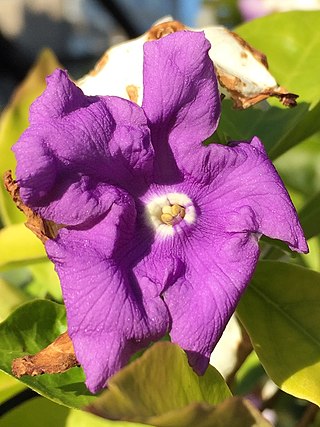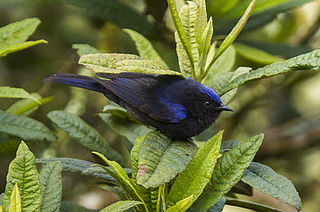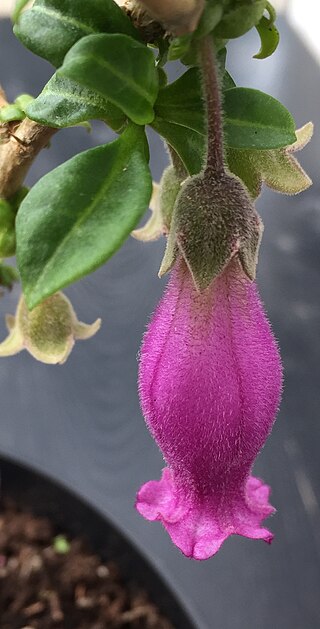
The geography of Bolivia includes the Eastern Andes Mountain Range which bisects Bolivia roughly from north to south. To the east of that mountain chain are lowland plains of the Amazon Basin, and to the west is the Altiplano which is a highland plateau where Lake Titicaca is located. Bolivia's geography has features similar to those of Peru which abuts Bolivia's northwest border; like Bolivia, Peru is bisected from north to south by the Eastern Andes Mountains, and these two countries share Lake Titicaca which is the highest navigable lake on Earth. Unlike Peru, however, Bolivia is one of the two landlocked countries in South America, the other being Paraguay which is located along Bolivia's southeast border.

The Yungas is a bioregion of a narrow band of forest along the eastern slope of the Andes Mountains from Peru and Bolivia, and extends into Northwest Argentina at the slope of the Andes pre-cordillera. It is a transitional zone between the Andean highlands and the eastern forests. Like the surrounding areas, the Yungas belong to the Neotropical realm; the climate is rainy, humid, and warm.

Brunfelsia is a genus of flowering plants belonging to subfamily Petunioideae of the nightshade family Solanaceae. The 50 or so species have been grouped into the three sections: Brunfelsia, Franciscea and Guianenses, which differ significantly in both distribution and characteristics, although molecular data have revealed that only two sections are natural (monophyletic), namely the Caribbean section Brunfelsia and a common section for all South American species. Linnaeus named the genus for the early German herbalist Otto Brunfels (1488–1534).

The puna grassland ecoregion, of the montane grasslands and shrublands biome, is found in the central Andes Mountains of South America. It is considered one of the eight Natural Regions in Peru, but extends south, across Chile, Bolivia, and western northwest Argentina. The term puna encompasses diverse ecosystems of the high Central Andes above 3200–3400 m.

Polylepis is a genus comprising 28 recognised shrub and tree species, that are endemic to the mid- and high-elevation regions of the tropical Andes. This group is unique in the rose family in that it is predominantly wind-pollinated. They are usually gnarled in shape, but in certain areas some trees are 15–20 m tall and have 2 m-thick trunks. The foliage is evergreen, with dense small leaves, and often having large amounts of dead twigs hanging down from the underside of the canopy. The name Polylepis is, in fact, derived from the Greek words poly (many) plus letis (layers), referring to the shredding, multi-layered bark that is common to all species of the genus. The bark is thick and rough and densely layered for protection against low temperatures. Some species of Polylepis form woodlands growing well above normal tree line within grass and scrub associations at elevations over 5000 m; which makes Polylepis appear to be the highest naturally occurring arboraceous angiosperm genus in the world.
Oligoryzomys destructor, also known as Tschudi's colilargo or the destructive pygmy rice rat, is a species of rodent in the genus Oligoryzomys of family Cricetidae. It is found along the eastern Andes from southern Colombia, through Ecuador, Peru, and Bolivia into northern Argentina. Its karyotype has 2n = 60 and FNa = 76.
The southern climbing mouse is a species of rodent in the family Cricetidae. It is found in Argentina and Bolivia in forested valleys and on slopes on the eastern side of the Andes Mountains.
Nymphargus bejaranoi is a species of frog in the family Centrolenidae. It is endemic to the eastern slopes of the Bolivian Andes in the Cochabamba, Chuquisaca, La Paz, and Santa Cruz departments. The specific name bejaranoi honors Gastón Bejarano, a Bolivian zoologist and Director of Forestry and National Parks, Ministry of Agriculture. Common name Bolivian Cochran frog has been coined for this species.
Oreobates choristolemma is a species of frog in the family Strabomantidae. It is endemic to Bolivia where it is known from its type locality, Serranía de Bella Vista in the Caranavi Province as well as from Sud Yungas Province and from Chapare Province in the Cochabamba Department.
Oreobates sanderi is a species of frog in the family Strabomantidae. It is found in north-western Bolivia and nearby south-eastern Peru. It is not considered threatened by the IUCN.
Microkayla wettsteini is a species of frog in the family Strabomantidae. It is endemic to Bolivia and only known from the region of Unduavi in the Unduavi Valley, Sud Yungas Province, La Paz Department. Common names Wettstein's Andes frog and LaPlaca's Andes frog have been coined for it. It is named for Otto von Wettstein, Austrian zoologist.

The capped conebill is a species of bird in the family Thraupidae.

Latua pubiflora(Griseb.) Baillon, is the single species of the monotypic genus LatuaPhil., endemic to the coastal mountains of southern Chile. A shrub or small tree to 10 m in height, bearing attractive, magenta-to-red, hummingbird-pollinated flowers, it is extremely poisonous – hallucinogenic (deliriant) in smaller doses – due to tropane alkaloid content and is used by Chilean machi (shamans) of the Mapuche–Huilliche people in traditional medicine, as a poison and to enter trance states. Its elegant flowers and yellow tomato-like fruit are attractive enough to merit its cultivation as an ornamental.

Brunfelsia pauciflora is a species of flowering plant in the family Solanaceae, the nightshades. It is endemic to Brazil, and it is grown in cultivation. A shrubby perennial plant grown in gardens, its common names include today, tomorrow together, yesterday, today and tomorrow, morning-noon-and-night, kiss me quick, and Brazil raintree.

The Southern Andean Yungas is a tropical and subtropical moist broadleaf forest ecoregion in the Yungas of southwestern Bolivia and northwestern Argentina.
Timothy Charles Plowman was an ethnobotanist best known for his intensive work over the course of 15 years on the genus Erythroxylum in general, and the cultivated coca species in particular. He collected more than 700 specimens from South America, housed in the collection of the Field Museum of Natural History. The standard author abbreviation Plowman is used to indicate this person as the author when citing a botanical name.

The Solanaceae, or the nightshades, are a family of flowering plants that ranges from annual and perennial herbs to vines, lianas, epiphytes, shrubs, and trees, and includes a number of agricultural crops, medicinal plants, spices, weeds, and ornamentals. Many members of the family contain potent alkaloids, and some are highly toxic, but many—including tomatoes, potatoes, eggplant, bell and chili peppers—are used as food. The family belongs to the order Solanales, in the asterid group and class Magnoliopsida (dicotyledons). The Solanaceae consists of about 98 genera and some 2,700 species, with a great diversity of habitats, morphology and ecology.

Petunioideae is a subfamily of the flowering plant family Solanaceae, the nightshades. It contains thirteen genera, as follows:
Cora aspera is a species of basidiolichen in the family Hygrophoraceae. Found in Central and South America, it was formally described as a new species in 2013 by Karina Wilk, Robert Lücking, and Eduardo Morales. The type specimen was collected in the Siberia region near La Palma at an altitude of 2,582 m (8,471 ft). Here, in a Yungas cloud forest, it grows as an epiphyte on bark. The specific epithet alludes to the roughened texture of the thallus surface, especially under dry conditions. The lichen has been recorded from Costa Rica, Colombia, Ecuador, Bolivia, and Peru, and it grows on twigs and branches in montane rainforest and páramo vegetation.
Ocotea porphyria is a species of evergreen tree in the laurel family (Lauraceae). It is native to southern Bolivia and northwestern Argentina, where it lives in humid montane forests, or Yungas, on the eastern side of the Andes. Common names include laurel del cerro, laurel la falda, laurel tucumano, and ayuínandí.












